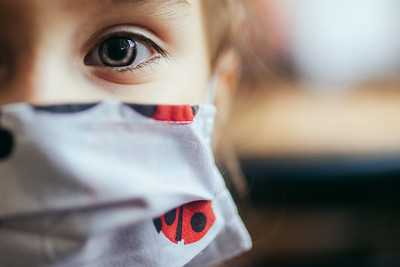A growing number of indirect indicators point to reduced fall enrollment for higher education institutions this year. The decline seems especially pronounced among low-income students.
Nationwide last year, fall enrollment in college classes by the high school Class of 2020 dropped by nearly 25% compared to the enrollment pattern for the Class of 2019. This year, higher education institutions hoped that having a better handle on the pandemic would reverse their fortunes. That seems not to be the case.
Unfortunately, fewer students are applying for federal financial aid, state grants for low-income students, and scholarship programs like Lansing Promise. All those programs aim to support students with lower household incomes. Students’ apparently limited interest in these funds now could mean that qualifying individuals may never enroll in post-secondary classes. If that happens, the long-term financial impact includes lower wages and lower lifetime earnings.
The early indicators of another weak fall enrollment persuaded one coalition to urge the state take steps to reverse the trend. Those steps included increasing aid to low-income students; extending participation in the state’s Tuition Incentive Program; and provide grants to enable colleges and universities to forgive student loan debts.
After 18 months of online learning, students are exhausted by it. Improvements in technology and expanded use of distance learning tools have not made online school more palatable, more interesting, or more valuable. Students want in-person learning.
Fall enrollment will continue to shrink under COVID-19
With the state of the pandemic, it should come as no surprise to anyone if Washtenaw Community College announces enrollment declines for the Fall semester. Typically, WCC doesn’t release its “final” enrollment figures until well after the semester starts. The WCC administration initially promised that it would deliver classes in both in-person and online or virtual formats. In the past several weeks, WCC has quietly converted many in-person class sections to online or virtual classroom delivery.
On one hand, one could say that this simply acknowledges that the pandemic rages on. In 2020, it was fair to argue that it was not safe to bring students back to campus. On the other hand, in 2021, we have highly effective vaccines that decrease infections, hospitalizations, and deaths. In fact, just yesterday, the FDA scotched The Great Vaccine Experiment by hanging the franchise tag on Pfizer’s vaccine. Undoubtedly, Moderna’s vaccine is mere hours or days away from the same status upgrade.
COVID-19 is going to be around for a long time. Mandatory vaccination is the only reasonable approach to controlling community spread. COVID-19 infections will certainly contribute to “herd immunity,” but the risk of death from infection is currently about 2%. And we don’t know what percentage of vaccination and/or infection will stop the community spread.
Rapid mutations leave people with a stark choice: every person will get either the virus or the vaccine. If the virus infected the entire US population, it would result in about 6.6M deaths. To date, the vaccines have resulted in three known deaths.
Watch the difference between K-12s and elite universities
Right now, the only way to bring students back to campus safely is to mandate vaccines for everyone – students, faculty and staff. Without it, the only possible outcome is what’s playing out in K-12 schools in Florida, Texas, Louisiana and elsewhere. The only reason this has not happened in Michigan is that most K-12 schools aren’t open yet.
The K-5 population is particularly instructive because no students in that group are vaccine-eligible. They will be both fully exposed to and completely unprotected from the virus this fall and winter. Contrasting that are the top-25 universities in the United States, all of which have mandated vaccines for all students and campus personnel. They will also be instructive because they will demonstrate what happens when all people on campus are fully vaccinated.
Will they have COVID-19 cases? Yes, they will. Will they shut their doors and send their students home? No they will not. Individual cases of COVID-19 will not lead to mass infections or mass paralysis on campus while administrators struggle to determine their next steps. Their fall enrollment will not be negatively impacted – more so because they’re the most elite universities in the country than their vaccine mandates. (Their fall enrollments were not negatively impacted last year when they sent their students home.) But nonetheless, they will demonstrate (once again) that vaccine mandates work.
Improving fall enrollment means mandating vaccines
We see – and have seen – the benefits of vaccine mandates every day. Every day that we do not have smallpox outbreaks. Or clusters of polio cases. But we have also seen what happens when we are not rigorous about enforcing vaccine mandates and public health codes. We have measles outbreaks. We see cases of the mumps in adults. And we have growing case numbers of tuberculosis in urban areas. COVID-19 is no different. It’s here and it will be with us for the foreseeable future.
The World Health Organization declared victory over smallpox in 1980 – long after the US stopped vaccinating its children against it. The first effective smallpox vaccine was developed in 1796. That means it only took the world 184 years to vaccinate away a disease that plagued humans for 3,000 years.
If WCC – and every other community college – want their fall enrollment back, it must mandate vaccination for all on-campus activity. Failure to mandate vaccination on campus is a cowardice that our community cannot afford.
Photo Credit: Nenad Stojkovic, via Flickr























